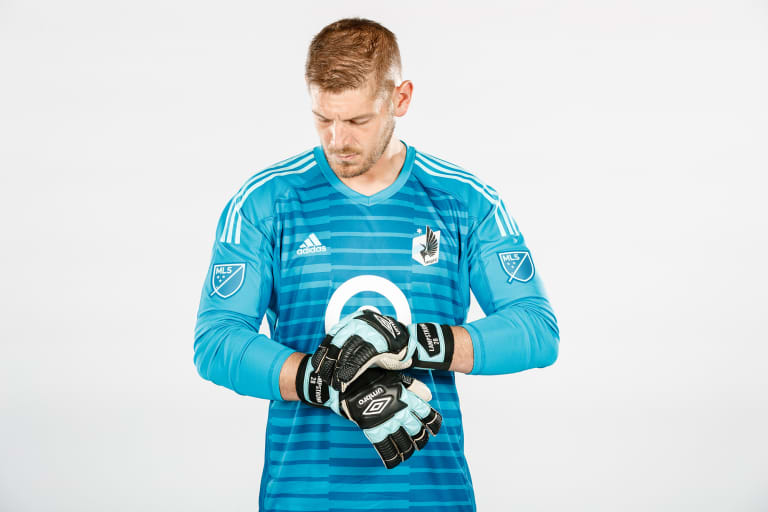A player’s number exists at the intersection of chance, tradition and personal significance. On the one hand, it’s meaningless: there might be technical meanings attached to numbers like 10 or 1 or 6 in soccer, but there are no hard and fast rules about it. Such associations are easily scrubbed off them. New players are told what’s available and then they make meaning out of them. Christian Ramirez picked 21 when he got to Minnesota United because his wife wore the number 3 when she played in college.
Other players have only vague preferences. They want low, even numbers if they’re defenders or they feel like high, odd numbers don’t sit right, somehow. Still others seem to not care at all. When Sam Nicholson was on Hearts in Scotland, he wore 11.
“I like 11, but Johan [Venegas] is that number, so I couldn’t really take that,” he said. He took 28 because “[t]hat was a number I used when I first started playing professional in Scotland.”
But goalkeeper Matt Lampson — who was acquired in a draft day trade from the Chicago Fire — has always worn 28. Always. The easygoing Nicholson was happy to oblige.
“Lampson asked me if he could use it, because it means a lot to him from stuff he’s been through,” he said. “So obviously I said to him, yeah, not a problem, you can have it. 12 was free, so I just picked 12.” It was close to 11, so it was close enough.
When I asked Lampson about it, it became clear that “close enough” was not an option when it came to 28.
“It’s a long story,” he said. “Do you want to know about it?”

As a high school senior in 2007 at St. Charles Preparatory in Columbus, Ohio, Lampson was diagnosed with Stage 4B Hodgkin’s lymphoma. The diagnosis and several rounds of brutal chemotherapy took their toll on Lampson physically, leaving him bald, weak and 100 pounds overweight thanks to the anabolic steroids he was on.
“Coming out of high school,” he said, “I was not recruited at all. I went to Northern Illinois University. It was one of the only D1 schools — actually, the only D1 school — to offer me to come on the team. I didn’t get any money — it was a walk on. So I went there, because I wanted to play D1. I was still having complications from chemotherapy and radiation. Healthwise, I wasn’t doing so great. But at the same time, I was not happy there. With the soccer, with the school. None of it.
“So I contacted John Bluem at Ohio State, and I said, ‘I would love to come play for Ohio State.’ I was just looking to walk on, I didn’t expect to play. And he said, yes we could use a fourth goalkeeper.” Lampson paused. “Which, to me, at the time, I was like oh, that’s great. I redshirted, so I came in in the second semester, and they gave me locker 28. Which, as everyone knows, 28 is not a goalkeeper’s number. Basically it was like a ‘you’re on the team, but you’re never going to play’ type of number.”
By the spring, he was the Buckeyes’ starting goalkeeper, ultimately playing in 56 matches. His 0.86 goals against average set a school record. The number 28 became a symbol of “the workman’s mentality that I not only needed to win the starting job there, but be a Big Ten Freshman of the Year, All Big Ten, everything like that. All those things that I needed to get me where I am today, I wanted to maintain."
His experience overcoming cancer led him to start the LampStrong Foundation and become one of MLS' most active community members. He was named the MLS WORKS Humanitarian of the Year in 2016 for his work with young cancer patients and their families.
“So I’ve had [28] every year,” he said. “I kept it at Ohio State. I kept it in Columbus. I kept it in Chicago. So I wanted to keep it here. It’s just a mentality. It’s a reminder — a daily reminder of what I need to do in order to succeed at the game I love.”
This is, fundamentally, how weight and meaning accrue to just about anything. What is tradition if not making an often random and meaningless world make sense by hanging onto what it gives us? A number by itself doesn’t mean anything — until we make it mean something.


